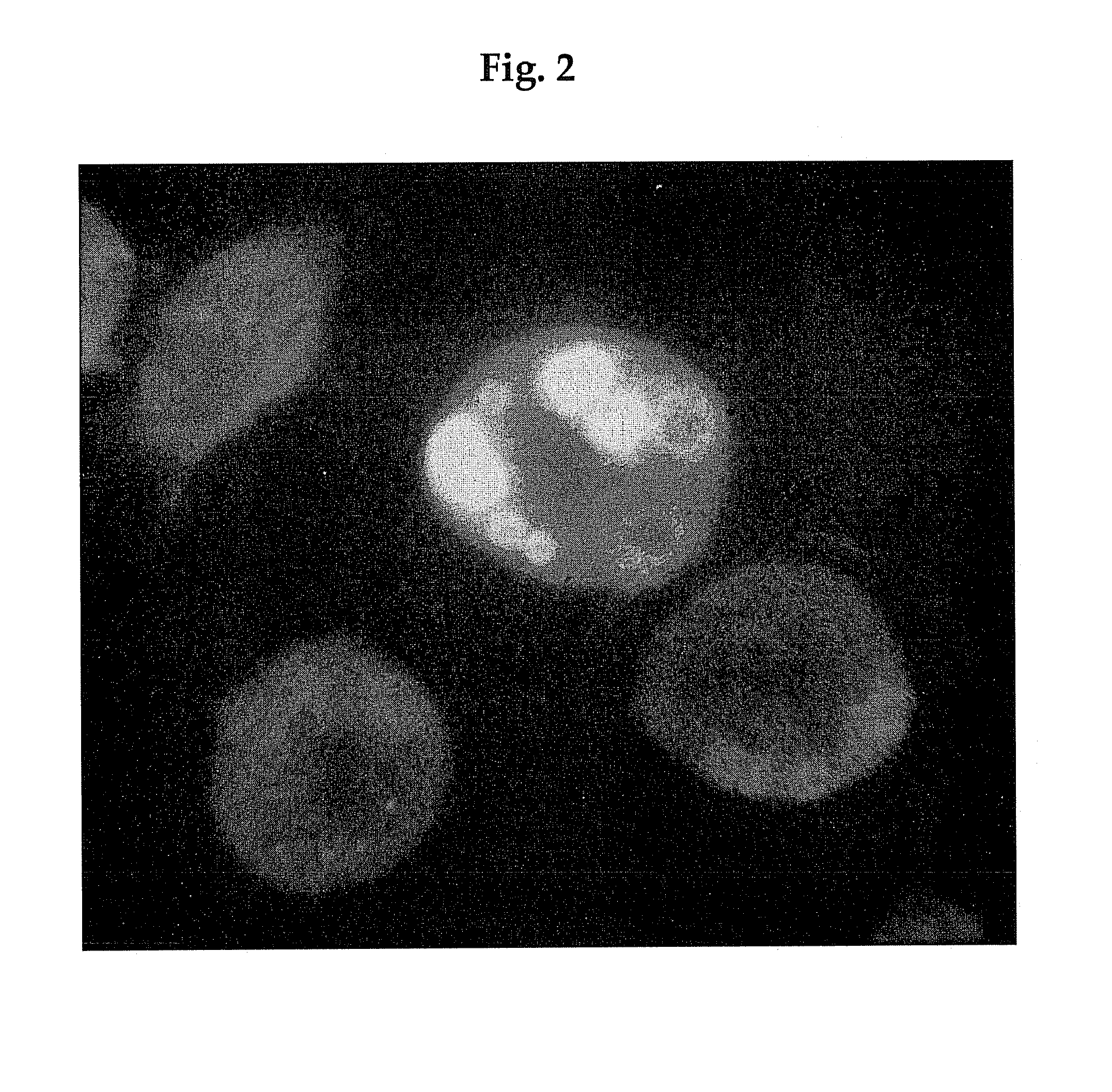Treatment for leukemia and idiopathic aplastic anemia
a technology for idiopathic aplastic anemia and leukemia, which is applied in the direction of antibacterial agents, drug compositions, extracellular fluid disorders, etc., can solve the problems of inability to consider a standard of care for patients with acute relapse, short response time, and inability to meet the treatment requirements of patients,
- Summary
- Abstract
- Description
- Claims
- Application Information
AI Technical Summary
Benefits of technology
Problems solved by technology
Method used
Image
Examples
Embodiment Construction
[0032]The present invention contemplates a process for treating a patient with leukemia or an aplastic anemia having cells with inclusions that stain with anti-E. canis antibodies or antibodies to other Ehrlichia or Anaplasma. That process comprises administering to the patient an antibacterial agent that is (i) an antibacterial amount of a rifamycin, (ii) an antibacterial amount of a quinolone, or a mixture of i and ii. In preferred practice, the rifamycin is one or more of rifampin, rifabutin or rifamide, and the quinolone compound is selected from one or more of the group consisting of nalidixic acid, ciprofloxacin, levofloxacin, moxifloxacin, gatifloxacin, tefloxacin and trovafloxacin.
[0033]The leukemia patient's marrow cells and / or erythrocytes typically contain bacterial structures stainable with acridine orange or giemsa that are visible in phase contrast microscopy once stained. In preferred practice, the antibacterial agent administration is repeated periodically until the ...
PUM
| Property | Measurement | Unit |
|---|---|---|
| phase contrast microscopy | aaaaa | aaaaa |
| bacterial structures | aaaaa | aaaaa |
| structure | aaaaa | aaaaa |
Abstract
Description
Claims
Application Information
 Login to View More
Login to View More - R&D
- Intellectual Property
- Life Sciences
- Materials
- Tech Scout
- Unparalleled Data Quality
- Higher Quality Content
- 60% Fewer Hallucinations
Browse by: Latest US Patents, China's latest patents, Technical Efficacy Thesaurus, Application Domain, Technology Topic, Popular Technical Reports.
© 2025 PatSnap. All rights reserved.Legal|Privacy policy|Modern Slavery Act Transparency Statement|Sitemap|About US| Contact US: help@patsnap.com



